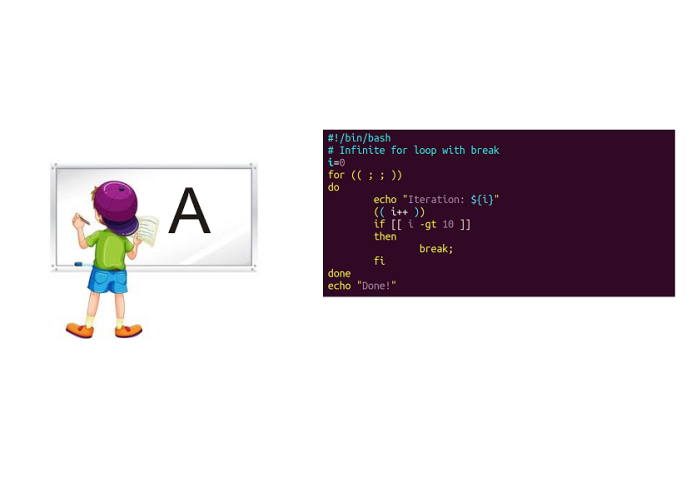When working with Bash scripts, loops are a fundamental feature that allow you to automate repetitive tasks efficiently. One of the most commonly used loops is the for loop. Whether you’re iterating over a list of items, processing files, or running commands multiple times, the for loop is a powerful tool to have in your scripting.
In this, we’ll explore the syntax of a for loop in Bash and look at practical examples to help you understand how it works.
Basic Syntax of a ‘for’ Loop in Bash
The general structure of a for loop in Bash is as follows:
for variable in list
do
#Commands to execute
done
variable: A placeholder for each item in the list.
list: A series of values you want to iterate over.
do…done: Encloses the commands to execute for each item.
Example 1: Iterating Over a List of Values
The simplest use of a for loop is to iterate over a predefined list.
#!/bin/bash
for color in red blue green yellow
do
echo “The color is $color”
done
Output:
The color is red
The color is blue
The color is green
The color is yellow
Here, the loop assigns each value in the list (red, blue, green, yellow) to the variable color and executes the echo command.
Example 2: Iterating Over Files in a Directory
You can use a for loop to process files in a directory:
#!/bin/bash
for file in *.txt
do echo “Processing $file”
done
Output (for files like file1.txt, file2.txt):
Processing file1.txt
Processing file2.txt
The wildcard *.txt matches all .txt files in the current directory, and the loop processes each file one by one.
Example 3: Using a Sequence of Numbers
To iterate over a sequence of numbers, use the seq command or brace expansion:
#!/bin/bash
for i in {1..5}
do
echo “Number $i”
done
Output:
Number 1
Number 2
Number 3
Number 4
Number 5
Alternatively, you can use the seq command for more flexibility:
#!/bin/bash
for i in $(seq 1 2 10)
do
echo “Number $i”
done
This example increments by 2, producing 1, 3, 5, 7, 9.
Example 4: Using Command Substitution
A for loop can iterate over the output of a command:
#!/bin/bash
for user in $(cut -d: -f1 /etc/passwd)
do echo “User: $user”
done
This loop extracts and prints all usernames from the /etc/passwd file.
Tips for Using ‘for’ Loops in Bash
1. Use Quotation Marks: Always use quotes around variables to avoid issues with spaces in filenames or list items. For example:
for item in “file with space.txt” “another file.txt”
do echo “$item”
done
2. Test Before Running: If your loop involves critical commands, test it with echo before executing.
for file in *.txt
do
echo “Would process $file”
done
3. Avoid Overwriting Variables: Ensure your variable names don’t conflict with existing ones in your script.
Conclusion
The for loop in Bash is a versatile and essential feature for automating tasks. By mastering its syntax and variations, you can significantly enhance your scripting efficiency. Try out these examples, and experiment with combining loops with other Bash commands to tackle more complex tasks.


